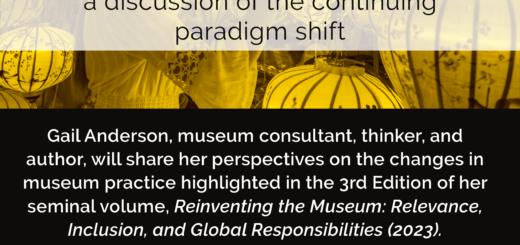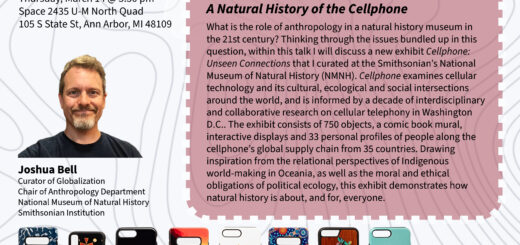Public programs facilitate dialogue between academics and professionals, informing scholarship and strengthening practice.
Multiple day conferences, year-long colloquia, individual lectures, “conversations” between individuals, hands-on workshops, and Museums at Noon talks featuring our graduate students all contribute to the remarkable richness of MSP offerings.
Video recordings of some MSP lectures are archived for viewing in our Media Gallery.

- This event has passed.
Museum Narratives and Transnational Reputations: History, State Legitimacy, and Contested Heritage in Ukraine and Spain
November 13, 2020 @ 12:00 pm - 1:00 pm
Please join us for a Museums at Noon conversation!
Title: Museum Narratives and Transnational Reputations: History, State Legitimacy, and Contested Heritage in Ukraine and Spain
Date: Friday, November 13
Time: 12:00 pm
Location: Online via Zoom (Meeting ID: 963 1071 4395 / Passcode: 685197)
Presenters:
- Grace Mahoney (PhD candidate, Slavic Languages and Literatures)
- Félix Zamora-Gómez (PhD candidate, Romance Languages and Literatures)
Overview:
How do curatorial works and memorial sites simultaneously serve as tools for constructing national identities and as materials in a state’s claim for transnational reputation? How can we frame these questions in the context of post-dictatorial nations and their contested heritage? Looking at the two different cases of Ukraine and Spain, this presentation will unravel the multiplicity of ways in which cultural artifacts and narratives become the very sites for these discussions and crystalize the impact of these often violent legacies.
Grace Mahoney:
Mikhail Bulgakov (1891-1940) is a highly celebrated author and playwright who was censored under the Soviet regime, but has enjoyed significant memorialization in post-Soviet space. Highly associated with Moscow, the memorial apparatus dedicated to Bulgakov in the Russian capital is well established. Bulgakov’s lesser-known connection with Kyiv, which was part of Russian Empire, Soviet Union, and is now the capital of independent Ukraine, is lesser known and further obscured by the author’s seemingly “undesirable” connection with the city. Nevertheless, a house museum in Kyiv founded in 1990 celebrates biography of the Bulgakov family who resided there and the author’s 1924 novel The White Guard, which portrays the calamity of the Civil War in the city in the wake of the 1917 Bolshevik revolution that brought an end to the Russian Empire. The novel focuses on the seizure of Kyiv by Ukrainian forces and admonishes Ukrainian national aspirations. This narrative doesn’t play well in Ukraine today and is perceived by some cultural activists and political figures as part of a colonial legacy that must be rooted out if the nation is to thrive. The museum then becomes the locus of this debate and is perceived by many as the institutional legacy of Russian chauvinism that has no place in the Ukrainian national landscape today. In my presentation, I trace the dynamics of the Bulgakov-White Guard narrative in an attempt to demonstrate the complexity of this heritage and how, in fact, its contested nature keeps the narrative vital, demanding a nuanced approach to the past.
Félix Zamora-Gómez:
After receiving financial and political support from the US government in the fifties, Spain went from fascist ally of Germany and Italy to be regarded as a legitimate nation full of liberties, prosperity, and culture. During the following decade, Spain became the tourist spot it is today and underwent a radical economic, infrastructural, and political transformation that today is known as the desarrollismo (developmentalism) period. As a new ally and member of the “Free World”, the Spanish Civil War (1936-1939) that gave origin to the Francoist regime became a thorny heritage to defend in the eyes of the international community. For that purpose, in 1964 the dictatorship celebrated the 25th anniversary of the end of the war under the name “XXV years of Spanish Peace” and organized several exhibitions around that theme with the purpose of laundering its international reputation. This presentation will dive into two of them: “España 64” and the Spanish pavilion at the New York’s World Fair of 1964. This presentation explores how these two exhibitions used curatorial narratives and cultural artifacts to deal with the haunting impact of the Civil War, promote an image of Spain as a country of growth and freedom, and even defend the democratic nature of the dictatorial regime.
Zamora-Gomez&Mahoney_BrownBag_FINAL



